In our digital, always-on, work-from-anywhere world, we are able to reach more people, tap into larger markets and deliver products and services more efficiently than ever before. Yet, our connected world faces harsh realities. Nearly every organization across the public and private sectors are under constant attack by cyber criminals, fraudsters, and scammers. Take appropriate action now to deter all types of security attacks.
What is a Cyber Attack?
From the headlines and likely personal experience, it seems everyone is hackable. Last year alone, the volume and value of cybercrimes hit record highs. A cyberattack occurs on the Internet every 39 seconds, according to the University of Maryland, to the tune of $1 trillion in costs, according to the FCC. All types of cyber security hacks are behind those staggering numbers.
So, what are the different types of cyberattacks, and what can you do to fend off these prolific and, unfortunately, ingenious attempts to get your data?
A cyberattack – and its intended outcome, a data breach – is the deliberate exploitation of your systems and/or networks for illicit gain. Using malicious code to compromise your computer, logic, or data, hackers steal your data, leak it, or increasingly hold it hostage until you pay up. These attacks are debilitating, costly events. Every organization must protect vital assets with effective cybersecurity to thwart common cyberattacks as diverse as the criminals behind them:
- Identity theft, fraud, extortion
- Malware, phishing, spamming, spoofing, spyware, trojans, and viruses
- Stolen hardware, such as laptops or mobile devices
- Denial-of-service and distributed denial-of-service attacks
- Breach of access
- Password sniffing
- System infiltration
- Website defacement
- Private and public Web browser exploits
- Instant messaging abuse
- Intellectual property (IP) theft or unauthorized access

What Are the Types of Cyber Security?
Cyber security is both art and science. Its practice should be embedded in your culture and operations, whether you’re just using email, mobile, or websites for marketing and communications or embracing cloud computing enterprise-wide. Every device, every app, every system, every employee, and every sector is vulnerable—from supply chain to retail to transportation to healthcare to banking to government.
Digital theft of information has far surpassed physical theft among businesses. Creating a culture of vigilance and implementing smart security strategies are essential today.
Network Security
Gaining access to an organization’s network is the motherlode for hackers with malicious intent. That’s why network security must be fundamental to your internal and external cyber security strategy. Many techniques, such as firewalls exist to deter data breaches.
The right security settings and protocols will allow legit traffic through and help block interlopers and scammers.
Since phishing and spoofing are the most frequent cyberattacks, secure email is essential to secure networks. Consider a program designed to scan and monitor all messages – incoming and outgoing – for potential attacks.
Application Security
Every organization depends on certain apps to conduct business. Protecting sensitive information at the app level is critical. Ideally, specific cyber security measures should be embedded before the app is deployed. At a minimum, to ensure a user is who they say they are, include a strong password protocol, two-step authentication, and security questions.
Cloud Security
For most people, online life is stored in the cloud through systems like Google Drive, Microsoft OneDrive, and Apple iCloud. Most businesses are the same, relying on Amazon Web Services, Microsoft Azure, Google or IBM Cloud, and others for data storage. Given the massive volume of critical and sensitive data stored, these platforms must remain secure at all times.
Cloud security also factors in business services stored in data centers. You want to be as expansive and deliberate as possible as you consider what the best types of cyber security for your requirements are. You want measures in place to protect your network from any exposures in end-user interfaces, data storage, data backup as well as human error.
Operational Security
Strengthening internal cyber security takes a concerted risk management approach. Have a team of risk management officers to focus on operational security that includes reliable, resilient backup plans, so you’re prepared if data is compromised. It is also critical to ensure that cyber security measures are understood and embraced by employees. When they’re educated on best practices for securing personal and business information, they become part of your security team.

What is a Cybersecurity Threat?
From the most senior leadership to the full IT/cyber team to every employee in every function, everyone must be ready and able to defend against the most typical cyber threats:
Malware
All organizations must guard against malware, short for malicious software, such as spyware, ransomware, viruses, and worms. When a user taps a bad link or attachment, the malware is activated, and, Cisco reports, that malware can:
- Block access to key network components (ransomware)
- Install additional harmful software
- Covertly obtain information by transmitting data from the hard drive (spyware)
- Disrupt individual parts, making the system inoperable
Emotet
In the world of malware, one of the most destructive types is Emotes. According to the Cyber Security and Infrastructure Security Agency (CISA), these advanced, modular banking Trojans operate as a downloader or droppers of other banking Trojans.
Denial of Service
Another harmful cyberattack is called a denial of service (DoS). This attack will flood a computer or system to disrupt the “handshake” process so it can’t respond to requests. A distributed DoS (DDoS) does the same thing to devastating effect at the network level.
When a network is disabled, it’s a prime opportunity for criminals to launch other attacks. For example, a type of DDoS called a botnet can infect millions of systems and devices with malware to give control of those systems to the hackers. Also known as zombie systems, notoriously hard-to-trace botnets target and overwhelm a system’s processing capabilities.
Man in the Middle
Cybercriminals excel at exploiting any opening. In a man-in-the-middle (MITM) scenario, hackers break into two-party transactions to disrupt traffic and gain access. According to Cisco, visitors using unsecured public Wi-Fi networks often open the door, letting MITM attacks get in between the visitor and the network.
Phishing
Phishing attacks run rampant, tricking receivers with fake communications that look authentic. With no clue to the harmful intent, users provide private data, like credit cards or social security numbers. That’s all it takes to steal money or your identity or load malware onto a computer or network.
SQL Injection
A frequent cyberattack strikes at a very basic premise for many companies. Hackers will inject a Structured Query Language (SQL) attack to insert malicious code into a SQL server, making it release sensitive information. All it takes is something as easy as entering the bad code into a website search box that’s not secure.
Password Attacks
There’s a reason we’re cautioned to change and differentiate our passwords. They’re the ticket to a treasure trove of information. In the wrong hands, password attacks wreak havoc by tricking people into ignoring security rules or infiltrating password databases for large-scale attacks.

How to prevent common cyber attacks
It’s clear the practice of cyber security is essential to protecting your business from cyberattacks and digital theft. Here are some high-level principles to adopt and embrace to position your organization to prevent and deter cyber threats.
Train your staff
Cyber security is everyone’s business. Rule number one should be ensuring everyone on your team understands the threats, what to look for and how to protect sensitive company data.
There’s a simple reason why. Your people are the target of cyber criminals and the most common channel for sensitive information. Criminals fake the identity of someone else in your organization or a “trusted” partner. They send fraudulent messages to get access to certain files or data. To the untrained eye, everything looks and sounds legit. But the intent and ramifications are anything.
Train your employees now. It’s the best way to protect your most precious assets and defend against breaches. When they understand how to prevent and respond to cyber threats, you’ll gain protection from the inside out.
Keep your software and systems fully up to date.
When organizations or individuals lag on system or software updates, they leave themselves wide open. Cybercriminals exploit any weakness they can find in your system or access it to compromise your network, your data, and your assets. Take preventative action now so the hackers can’t get in.
To strengthen your resilience, invest in a patch management system. It’s the easiest way to implement and manage all software and system updates across the enterprise. The reality is that once a hacker gets in, the damage is done. And it’s not always recoverable. Play it safe.
Control Access to Your Systems
For a business, one of the biggest threats comes from within. Systems can be compromised when an employee installs software on a business-owned device. First, take a zero-trust approach and manage administrative rights. Next, establish guidelines about installing apps or accessing certain data on your network. And finally, enforce the rules. Do whatever you can to protect assets and information.
Install Firewall
Cybercriminals use easily available technology to engineer many different kinds of sophisticated data breaches. Every day, new tactics surface, and old threats resurge as the daunting and relenting attacks continue.
One of the most effective ways to protect your network? A firewall is a critical layer, providing a barrier between your trusted connections and external, untrusted, or unknown ones. Firewall systems are designed to deter large-scale attacks on your network or systems before any damage can be done.
Backup data frequently
The reality is that your organization is more likely to experience a cyber or ransomware attack than not. Be prepared by ensuring your data is safely backed up. It’s your best line of defense to avoid downtime, data and IP theft, and financial loss.
Passwords and Two-factor Authentication
Your organization is vulnerable if you’re using the same password setup for everything. Once a hacker figures out passwords, they now have access to everything in your system and any application you use.
There are two things to do. Have different passwords set up for every application and change them often to maintain a high level of protection against external and internal threats. Next, add multi-factor authentication to validate a user’s identity. As CISA notes, attackers commonly exploit weak authentication processes. Using at least two identity components to authenticate a user’s identity mitigates the risk of a cyber attacker gaining access.
DTS provides tailored, scalable cyber solutions for small- and medium-sized organizations. We use top resources and the expertise of talented individuals with a passion for excellence to help protect our clients’ people and data. Our approach is consultative and education oriented. You can feel confident that your DTS solution is strong, reliable, and helping to drive a culture of compliance. Choose DTS for security reviews and assessments, remediation, managed services, licenses, and fractional CIO services. Visit DTS: Contact page to schedule a consultation call.


